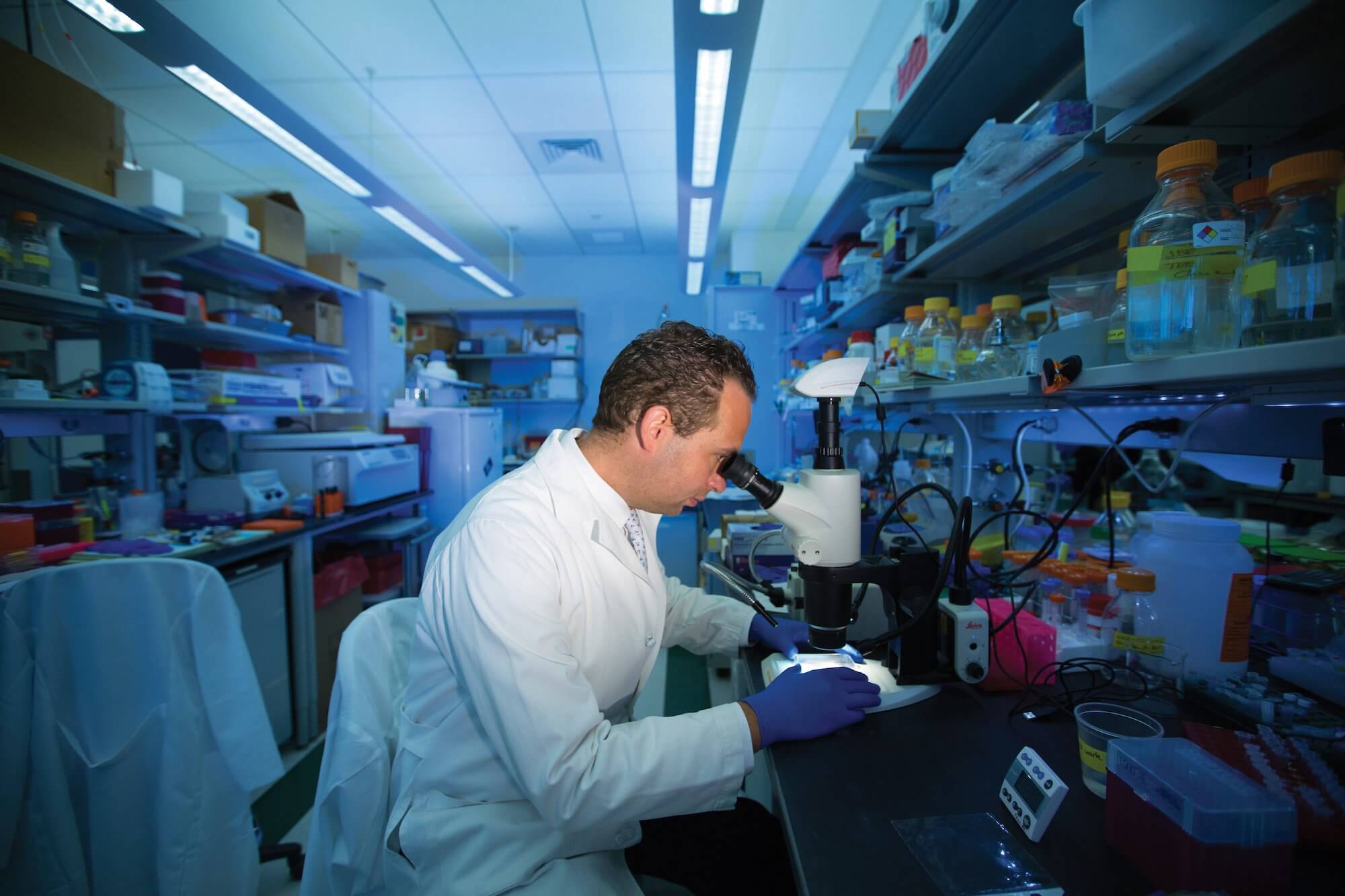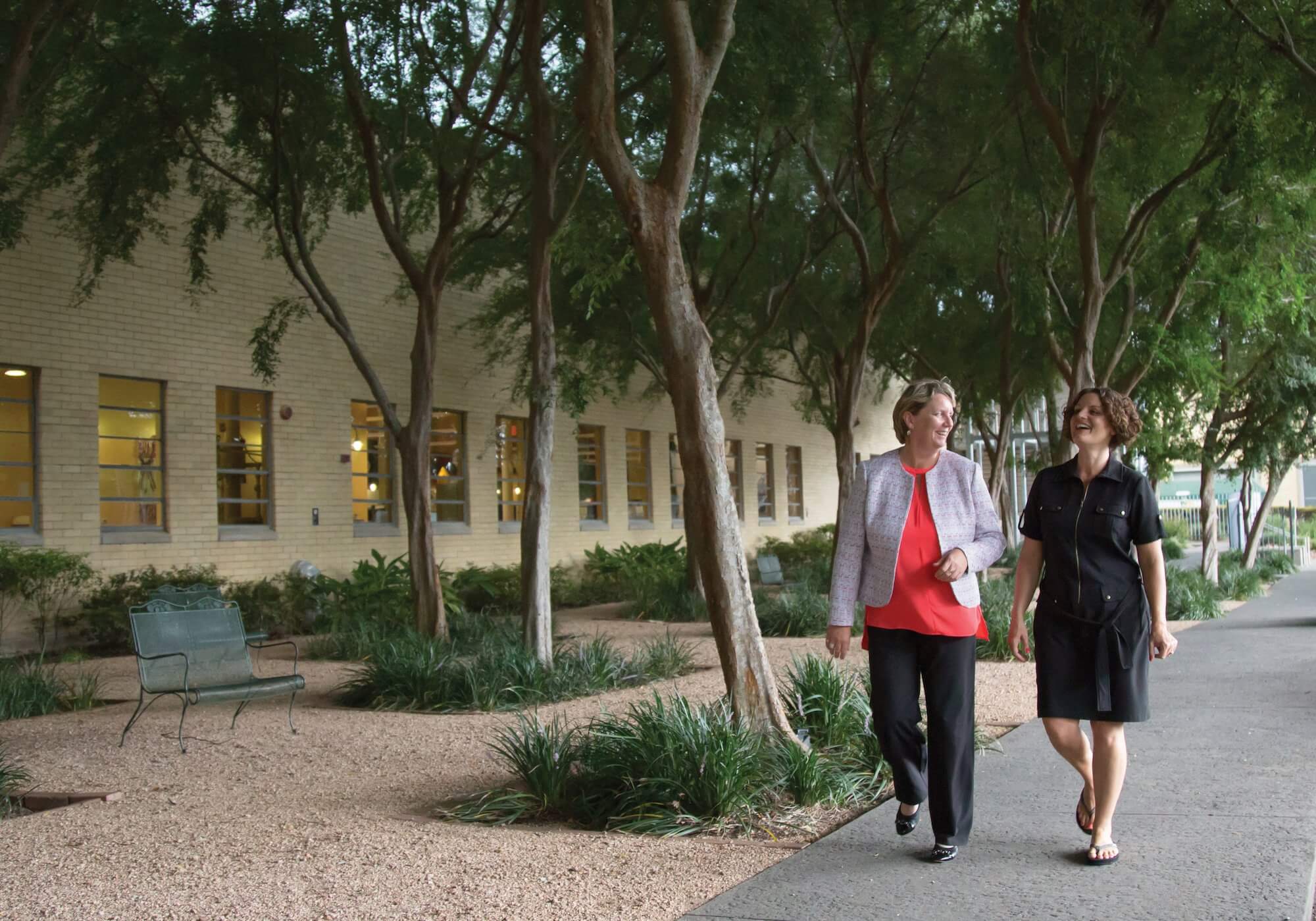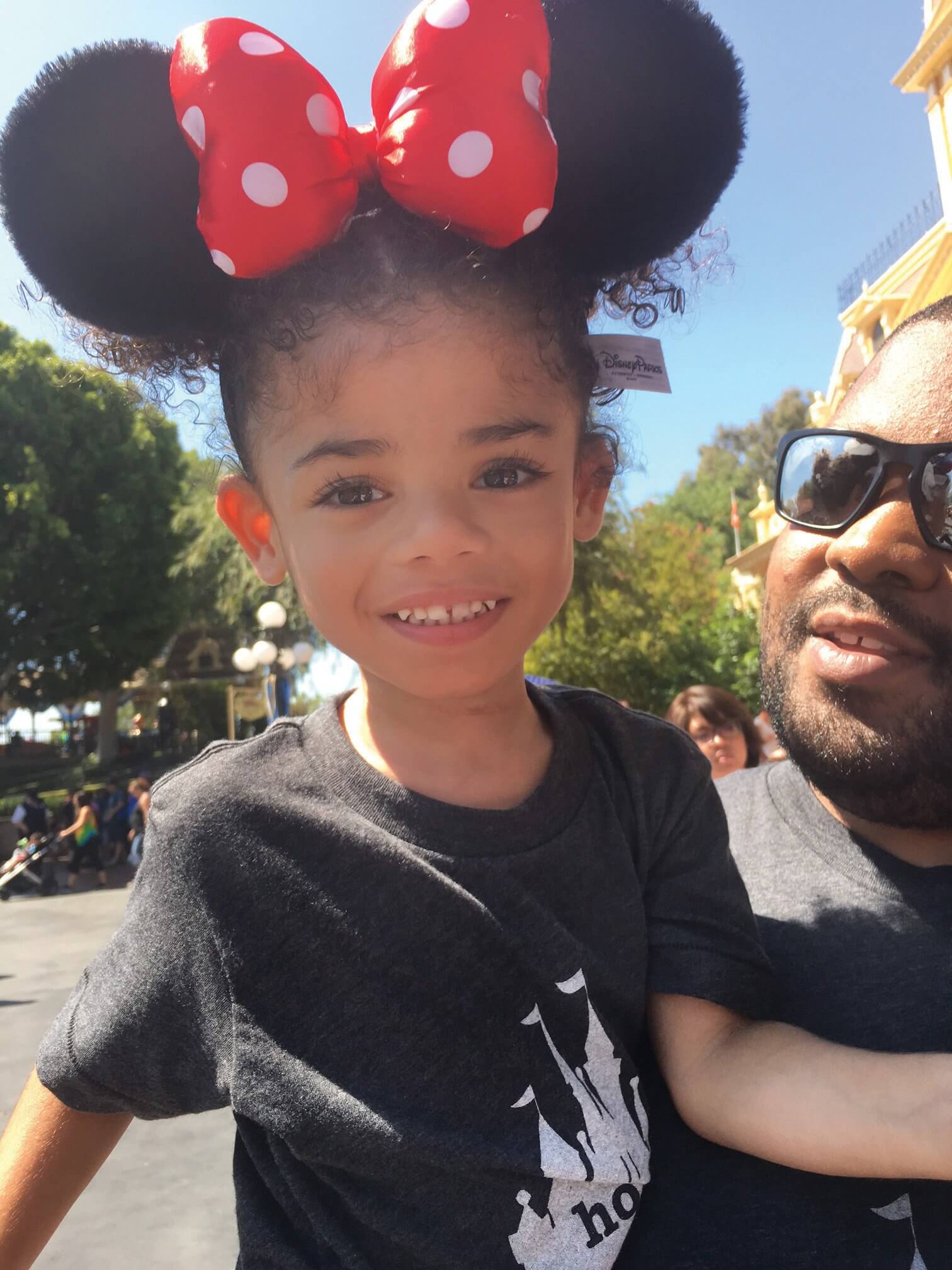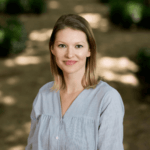Social Media and Medicine

When Christina Harper’s daughter was an infant, surgeons cut a hole through the front of her neck and into her windpipe. By inserting a breathing tube in the tiny opening, they gave her lungs quick, easy access to air.
Hours later, Harper joined the Facebook group “Moms of Trach Babies.”
“That resource was a godsend for me,” said Harper, who lives in Orange County, Calif. “The group had all different mothers from all different stages of life—new trach moms, older trach moms, kids who have had their trach tubes since birth and are now in their teens. Without them, I would have had no clue what to do, how to do it or what meant what.”
Her daughter Harlow lived with the tracheostomy tube for about two years, at which point Harper began asking when it could be removed. It was limiting Harlow’s development, impeding her ability to eat and speak, and no longer seemed medically necessary. When the doctor said it was too soon, Harper reached out to multiple specialists in Southern California, all of whom told her the same thing: not until the age of five.
“That was disheartening, but I’m persistent and I’m her advocate,” Harper said. “I went back to my trach moms group and a lot of them were having success doing a procedure called LTR. They were having this done as early as 18 months old, and here we are, two years old and beyond, and people are still telling us ‘no.’”
With laryngotracheal reconstruction, or LTR, grafts are taken from either the ribs or thyroid cartilage of the larynx and placed on the walls of the airways, ultimately allowing for removal of the tracheostomy tube and restoration of airflow in the windpipe. Through Facebook conversations and Google searches, Harper found Dr. Deepak Mehta, otolaryngologist at Texas Children’s Hospital and associate professor of otolaryngology at Baylor College of Medicine. After one visit to Houston, Harlow—who Mehta described as “the perfect candidate”—was scheduled
for surgery.
“I seriously owe it all to this group of women,” Harper said. “Social media has saved me from having a nervous breakdown because I have someone to speak to that truly understands what I’m going through.”
Today, Harper is paying it forward, regularly monitoring her Facebook group for moms like her and for the opportunity to share Dr. Mehta’s information. As for Harlow, her tiny voice can be heard filling up rooms and cars and grocery store aisles.
She loves to sing.
Only Connect
Now more than ever, the human race is intertwined. We communicate on Facebook, blogs, Instagram, Twitter. We sit late in front of computers, stare at our smartphones, download social media apps. Our exchanges are instantaneous, global, ubiquitous.
According to a recent study by Pew Research Center, nearly two-thirds of American adults use social networking sites. This is powerful, because in a world where mass shootings occur almost weekly and everything from our morning lattes to our fathers’ strokes are made public via Instagram and Facebook, we are finding less solitude and more solidarity. We have created new communities and, through them, found support. Nowhere is this more meaningful than in the vast world of medicine.
Sharing information can be therapeutic for individuals faced with traumatic experiences, challenging diagnoses, or controversial treatments. Popular health-related websites now considered mainstays, including CaringBridge, grew out of a need to share one patient’s sensitive health information with a close circle of family and friends. And for a patient with a rare genetic condition—so rare that it has only just been named and doctors are still in the process of gathering and crunching data—finding others with the same diagnosis will help close the distance between effective treatments and, hopefully, a cure.
According to Pew, seven in 10 adult internet users say they have searched online for information about a range of health issues, including specific diseases and treatments. But that’s just the tip of the iceberg. Patients turn to social media to seek out specialists, swap personal medical information, and, when necessary, grieve.
About a Blog
Nothing in me wants to write this post.
So begins a blog entry from Oct. 16, 2015. Written by Casey Wiegand, it details the heartbreak behind three miscarriages.
I honestly have dreaded typing these words. Dreaded in a way facing the feelings, dreaded the judgments that will be out there from people who don’t know all the details. But I feel a constant soft nudge to be the voice for those in my shoes… So here I am raw and stumbling out to share more of my story… humbled again and putting out my life and my hurt for those of you who understand. Those of you who scroll through your feeds every day and rejoice at the new lives growing in all the beautiful bellies but weeping for the lives that keep getting lost in your own.
Wiegand, who initially set up her popular site, CaseyLeigh, to update family while her son was in the NICU, quickly realized the value of connecting to other families with similar struggles.
“I stumbled upon this whole community of bloggers and I thought, ‘I want to build something like that for my family,’” she said. “Originally I thought it was such a sweet way to capture our life and be intentional about it. Then when my second child was about 10 months old, we got pregnant and we lost that baby. I had already been using this space to talk about our life, so it was really natural for me to process that grief here.”
Wiegand’s posts are full of unedited emotion; they are honest and sometimes heartbreaking to read. On Instagram she has more than 106,000 followers, and her carefully curated posts complement her blog and direct traffic to her site. She’s shared her emotional, spiritual and medical journey through three miscarriages. Happily, she’s also shared the joy of two additional births. Her youngest daughter was born in August.
“It has been amazing how many women connected with my story,” Wiegand said. “It made me feel so much less alone because as I was hurting and processing, I was suddenly connecting with people all over the world who had walked through that and who had felt similar.”
After her miscarriages, Wiegand set out to uncover a cause. Through blood tests and genetic evaluations, she was diagnosed with methylenetetrahydrofolate reductase (MTHFR) deficiency, a mutation associated with elevated levels of homocysteine and lower levels of folate in the body. She has written about it on
her blog—from her diagnosis to treatments to the name of her doctor. That’s an important point, because not everyone in the medical community agrees that mutations in the MTHFR gene are associated with recurrent miscarriages, so not everyone tests for it. Wiegand’s public disclosure of her own medical journey places her in the role of advocate, empowering other women struggling with loss to seek out testing, ask specific questions, and demand answers.
“It honestly makes me feel better thinking, ‘OK, we went through all that heartache, but maybe we can help someone else,’” Wiegand said. “It gives you a peace in your heart.”
Building Bridges
On June 7, 1997, nearly seven years before the launch of Facebook, Sona Mehring set up a social media platform, although she didn’t know it at the time. She had been asked by two close friends to share health updates about their daughter Brighid, born prematurely that day. After two emotional phone calls that lasted 45 minutes each, an exhausted Mehring decided there had to be a better way, and so CaringBridge.org came to life.
“It certainly eased the burden of telling people what was going on,” Mehring explained, “but the wow factor was the ability to bring together that community when everyone needed it most.”
Today, more than half a million sites have been created on CaringBridge. Advertised exclusively through word of mouth, the non-profit’s free, user-friendly appeal lies in its capacity to rally support for a loved one while sharing important, often difficult, health news. Users create a site and share their unique link with friends and family; they set their account to be as private or as public as they feel comfortable and update with news and photos as often as they wish. In turn, people visit the page for new information, posting well-wishes and words of encouragement. Each page is a virtual living room, a place to go for comfort and kinship.
“Being able to connect with your friends and family no matter where they are, whether they’re across the street or around the world, is healing,” Mehring said.
That’s not just a hunch. Numerous studies have shown that social ties enrich lives and play crucial roles in health and longevity. A 2010 study published in the journal Plos Medicine found that a lack of connections can be so detrimental to health that individuals with strong social relationships had a nearly 50 percent increased likelihood of survival compared to those without.
Mehring recounted a story about a woman who called to tell her that CaringBridge helped save her husband’s life after he’d been diagnosed with cancer.
“He had basically given up and was in a cycle of despair,” Mehring recalled. “One day, his wife sat him down in front of the computer and he spent the next three hours reading the CaringBridge site she created for him. He read not only what she had written, but what other people had written. From that moment, his despair turned to hope and his whole attitude and story turned around.”
Six years later, Mehring was attending a conference when a couple came up and introduced themselves.
“There he was,” she said.
13 Years
When Michael Mitchell was born, his mother knew immediately that something was wrong. Just three years earlier, her firstborn, a daughter, died from a mysterious condition characterized by low muscle tone and contracted fingers—symptoms undeniably present in her son. Physicians ran test after test, but all came back inconclusive. The ambiguity was wrenching. Without a diagnosis, there was no hope for treatment. Without an explanation, nobody could tell the Mitchells what the future might hold. Was this a progressive disease? What sort of therapy might be most beneficial to Michael? What was his projected lifespan?
“When Michael was younger, we were told that he would not walk, he would not crawl, he would not sit up, he would not, would not, would not,” his mother, Lace Mitchell, recalled.
And yet, walk Michael did. Without anyone to turn to, Lace and her husband forged their own way, enrolling Michael in various forms of therapy, supporting him and pushing him to try his best, all the while not knowing what his condition was or what they could expect.
This went on for 13 years.
What finally cracked Michael’s case was the development of two genetic tests, considered game-changers in the field: chromosomal microarray analysis (CMA) and whole exome sequencing. Before these tests, only 10 percent of rare genetic conditions were diagnosed. After, that number climbed to nearly 50 percent.
Geneticist Christian Schaaf, M.D., Ph.D., who works as an investigator at the Jan and Dan Duncan Neurological Research Institute at Texas Children’s Hospital and as an assistant professor in the Department of Molecular and Human Genetics at Baylor, explained the value of the tests through analogy: If you think of the genome as a library, then the CMA provides you with an inventory of the library; it looks at the number of shelves (read: chromosomes), and counts the number of books on the shelves to ensure there are no missing or extra copies. The exome sequencing test takes it a step further and actually opens the books to check for misspellings (or mutations) in the expressed genes in the genome.
In Michael Mitchell’s case, the tests revealed a mutation on the MAGEL2 gene. But here’s the rub: until another patient was identified with the same genetic mutation and the same observable characteristics, it was all hypothesis, and MAGEL2 was just considered a “candidate gene,” a potential cause for Michael’s condition.
“Nobody has a perfect genetic code; we all have thousands of misspellings or mutations,” Schaaf explained. “So the challenge is not so much in generating the data, but in the interpretation.”
The key for these rare genetic conditions is finding another patient with not only the same mutation but similar physical symptoms as well, thus verifying suspicions that it is that exact mutation on that exact gene that is causing those exact symptoms. Interestingly, many individuals turn to social media to find a match when a diagnosis cannot be made after testing. Armed with a handful of “candidate genes,” they take matters into their own hands, posting their genetic results and details of the condition in hopes that someone, somewhere, might recognize it.
Michael Mitchell was lucky. He was referred to Schaaf by a colleague just as Schaaf had linked four other individuals with the MAGEL2 mutation, each of them exhibiting the same physical characteristics. Shortly thereafter, Michael became the fifth person in the world to be diagnosed with Schaaf-Yang Syndrome.
Finding Your Tribe
The importance of a diagnosis cannot be overstated. Families dealing with rare genetic disorders are plagued by frustration, uncertainty, guilt and isolation. By obtaining a name, they gain an answer, and that simple distinction is empowering. However, because many of these conditions are so rare and, in some cases, brand new, physicians are often unable to offer anything comforting or concrete to families seeking information. So families go in search themselves.
“I think there’s a paradigm shift in medicine and science in general,” Schaaf said. “The paternalistic approach has really come to an end. It’s not just us as physicians telling people what to do. It’s more of a team effort now.”
When Lace Mitchell scrolled the internet looking for a support group for moms of kids with Schaaf-Yang Syndrome, nothing came up. So she decided to create one.
“God put it in my heart and I started the page without a lot of information, just with the idea that this was for families to connect,” she said.
It has morphed into a main page, intended primarily for general information about Schaaf-Yang and current clinical studies, but it is supplemented by a private Facebook group where parents communicate more openly. Like Harper’s “Moms of Trach Babies” group, these parents use the private page to post personal photos, share the nitty gritty details of their experiences, and seek advice. Today, there are close to 60 members. For a rare and newly identified genetic disorder, that is considered robust. In fact, for many of the members, it was finding the Facebook group that helped them make a diagnosis in the first place.
Lace Mitchell is active on the page, updating it frequently and openly sharing her son’s experiences with the community. It is the exact kind of support she had yearned for all those years.
Michael has exceeded all expectations, and it’s inspiring to the families in the Facebook group to hear his story: how he loves to ride horses and is proficient in sign language, how he can be smart and funny at the same time. He is a whiz at Houston landmarks—even zooming down I-45 in a car, he can tell you exactly where he is and, most importantly, where the Target is located.
“I hear it over and over again, how places like Facebook are a lifeline because it is a way to connect with other families,” Schaaf said. “One of the families I work with calls it her tribe. She mentioned that the other day, she was at the store and someone made a comment about her children, like, ‘What did she do? She probably drank or did drugs during pregnancy to cause this.’ She said, ‘I’ve had these situations a few times over the years and this time, for the first time, I could laugh about it because now I have an answer and I know for myself what caused it, and that it wasn’t me. And I have my tribe.’”
Going Viral
Many health care institutions are embracing social media to help their research and patient care. Digital platforms such as MyGene2, for example, encourage individuals to input their genetic information into an online database with hopes of building a large, searchable information system.
“I think, increasingly, we’re recognizing that one of the big obstacles to gene discovery has been sharing data,” said Michael Bamshad, M.D., pediatrician and human geneticist at the University of Washington and co-founder, along with Jessica Chong, Ph.D., of MyGene2.
While clinicians and researchers can create public profiles as well, they are bound by ethics (specifically, the International Review Board’s common rule) and by HIPAA regulations, which are designed to protect the security and privacy of health information. So they can’t share nearly as much information as a patient’s family can. A family can post detailed health information, including all of their candidate genes, genetic test results and genetic data. They can share as much as they want, and the more they share, the more likely it is that matches will be made.
To moms who are ready to advocate for their children, to parents who are determined to find answers, to anyone struggling with new diagnoses, grief or loss, the sharing of knowledge and of personal health stories can be invaluable.
It can also be lucrative.
Two years ago, the Ice Bucket Challenge went viral on social media. Participants posted photos and videos of buckets of ice being dumped on their heads—all to encourage donations for research related to amyotrophic lateral sclerosis, or ALS, an incurable neurodegenerative disease that affects nerve cells in the brain and the spinal cord. Recently, the ALS Association announced that funding from the challenge—which amassed millions—directly aided in the discovery of a newly identified gene, NEK1, now considered one of the most common genes responsible for ALS. This breakthrough will help researchers develop therapies for the devastating disease.
And just this past May, Humans of New York, a blog-turned- social-media-force with more than 20 million followers, published a series of short narratives highlighting patients, families, caregivers and clinicians at New York’s Memorial Sloan Kettering Cancer Center. The stories were part of a fundraising campaign.
In the introductory Instagram post on May 5, Humans of New York creator Brandon Stanton wrote: “Obviously, these are not going to be easy stories to read. These are war stories. The treatment of cancer can be nearly as violent as the condition itself, and even the doctors will frame their efforts in terms of warfare. But the fight against pediatric cancer is uniquely tragic because the battlefield is the body of a child. … So yes, these are war stories. But this is also the story of humanity’s bold response to the greatest injustice of nature. And as we learn these stories, we’ll be raising money to play our own small part in the war.”
The initial goal was to raise $1 million for the Center. By May 20, the last day of fundraising, Stanton announced that 90,000 readers had donated nearly $3.4 million. He gushed: “You are the most caring community of people on the internet.”









